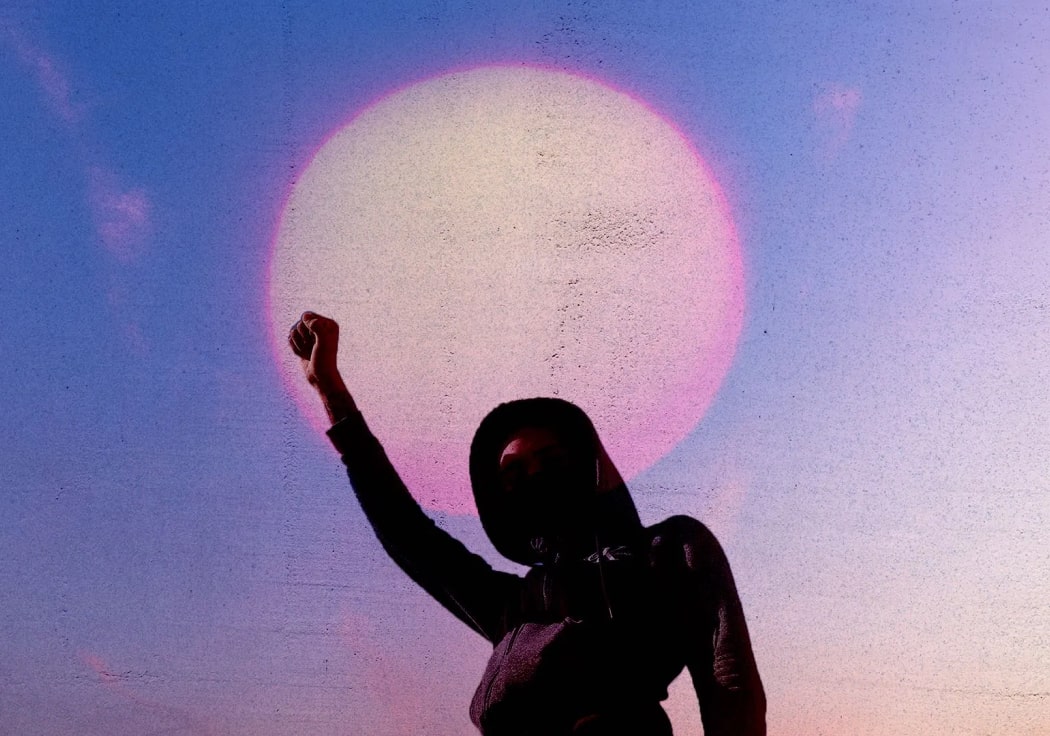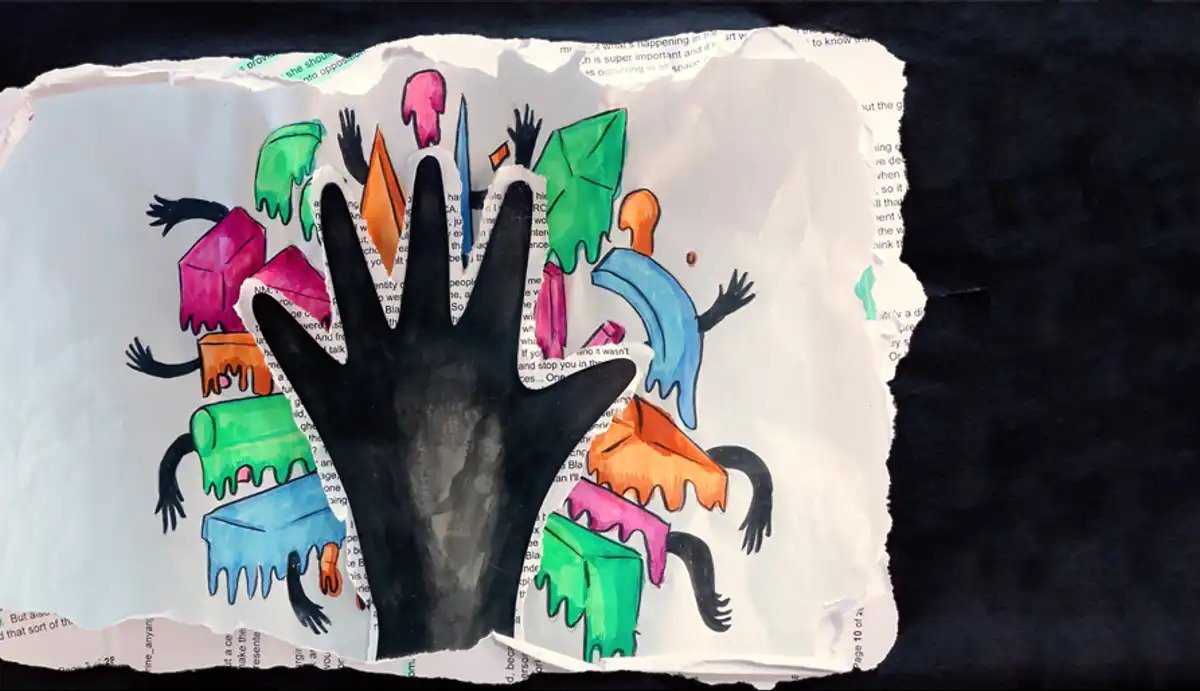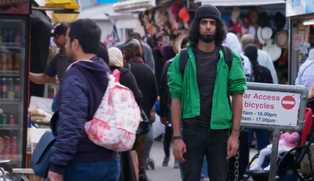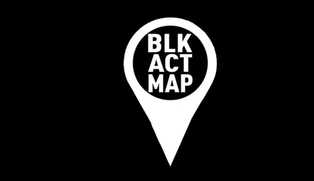“I don’t want to feel like it’s only me. I know it’s not only me, because there are others out there…”
– Maybelle Peters
In Jessica Ashman’s short film ‘I Don’t Protest, I Just Dance In My Shadow’ we hear from eight Black women and women of colour artists who are navigating the visual art and animation world, as well from Ashman herself. The film is an exploration of belonging and sets out to ask the artists how they operate as black faces in white spaces. How, ultimately, the artists are hiding in plain sight. Using animation and recorded interviews, ‘I Don’t Protest, I Just Dance In My Shadow’ is an abstract confessional: a visualisation of joy, frustration, wishes and dreams, and what it feels like to be and create as an artist of colour. Skin Deep talked to Ashman her work, modes of survival and understanding how race and gender intersect in her art. But, more importantly, how we create confessional art that centres the self.
*
Skin Deep: One of the first questions you ask the other artists in the film is “what themes are you drawn to?” So I’m going to ask you the same question. Jessica Ashman: I’ve always been drawn to narratives about outsiders and the marginalised, resulting in a lot of my work focussing on themes of belonging and acceptance. However, recently the notion of ‘the personal as the political’ seems to be coming through in a strong way. I’m realising that there is validity in the stories that emerge from my experiences. I don’t mean this in an egotistical way! But more in that I want to connect my story my story to others who feel the same way, but don’t have a platform to speak out. Stylistically, I’ve always worked in traditional hand-made animation mediums, such as stop-motion puppetry; I need to use my hands to make my work. But recently I’ve started to fall back in love with drawing and combining this with collage and cut-out paper animation – still stop-motion practices, but in a different form. Using drawings and photographs is innately personal, so as my work gets more personal, so does my style. SD: I wanted to know more about the chapter titles in the film. You begin with the title of the short film ‘I Don’t Protest, I Just Dance In My Shadow’ then you have ‘Come Apart’ and finally ‘A Realisation.’ What was the story behind the naming of the titles? JA: I spent a long time surrounded by all this information in my studio: the audio recordings of the women I interviewed on my laptop, pages and pages of transcripts, mad soundscapes created by the sound designer of the project, Seb Bruen… all types of material everywhere! I was really confused as to how to form the film, but the answer came from that confusion. The chapter titles are the various thought processes I was going through during that time. The first title is actually ‘Open the Doors: Trust Yourself’ and was a section where I allowed myself to rely on my instincts. The second, ‘Come Apart’, was the moment when I realised I need to pick apart all these intersections of being a Black woman creating art. Finally ‘A Realisation’ is the point of acceptance, a way of moving forward with my identity, galvanised by the women that I met, through the sharing of our experiences. Perhaps ‘A Celebration’ could have been an alternative title for the last section. SD: In many ways what you’re working towards in this film is a (re)presenting of the black self in the white world of animation and art. So, I wanted to ask what your own personal modes of survival have been in navigating institutions that are exclusionary? JA: Good question, and it really does feel like survival at times. I’ve definitely become more unapologetic in how I present ideas around my identity in my work, almost out of necessity. When I first started out, I bottled all these feelings and ideas inside, as it felt like the institutions I was involved in weren’t interested in those themes. But now I’ve become more confident in saying: this is what I’m about and yes, it sometimes makes people uncomfortable. And when the institutions do start to get excited about work that is based on parts of my identity it can feel shallow, as if I am ticking a box. I still think it’s important to be true to your truth. I make sure I surround myself with people I trust and who adhere to the same ideals as me so I can feel safe, valid and encouraged to continue with my work. This was not the case for a long time. I moved around the UK a lot for work and have ended up in some very white, isolating spaces – I think this hindered my progress more than anything. SD: You’ve referred to the film as an ‘abstract confessional.’ Can you tell us a bit more about how this aided your creative process? JA: I didn’t realise the film I was creating was confessional in nature until after I had taken a step back from the project. I realised that by chatting to these eight women, mostly unknown to me, I had created a sort of ‘safe space’ for us to share certain ideas around race, gender and identity in relation to our work, but also in terms of our place in the world as women of colour and Black women. The film and the installation then became snapshots of these confessional moments. SD: What are you working on next and where can people find out more about you? JA: At the moment I’m working on two projects: a short film about the importance of Carnival around the UK to 2nd and 3rd generation Caribbean diaspora, which will be out very soon. The second project is a bit of a left turn for me, and perhaps, a sort of ‘leveling up’ of where I want to see myself as an artist. I play the guitar and sing in a Punk/RnB band called Secret Power and I’m getting more comfortable with using my own music with my moving image work. So this other project combines my baby punk dreams with a performance that explores belonging in Blackness. I’m developing it with the Birmingham based arts and film festival Flatpack. In terms of where to find me, Instagram is probably your best bet and is what I try to update/procrastinate with the most. That or my website for more of an overview of my work to date. ‘I Don’t Protest, I Just Dance In My Shadow,’ has been screened at festivals across the world. The Blackstar Film Festival in Philadelphia this summer was her biggest screening of the video to date. Through an encounter with a woman at the screening Ashman realised “that even though this film was born out of frustration and insecurity about my own validity as an artist, I have actually made a piece of work that was full of celebration and solidarity”. The short film is also part of a larger, more interactive experience that can be seen here.




